Creative writing involves a deliberate rejection of practicality: To get into the right mood for writing requires short-circuiting our usual calculations of profit and loss, since there is nothing as gratuitous as a poem or story.
— Adam Kirsch in The New Republic
It was misting on the platform when we departed. The temperature measured 58 degrees in Emeryville, California (of East Bay IKEA fame), where our poor, huddled masses gathered in the chill morning air. We were a motley crew: next to us stood dreadlocked hippies carrying camping packs, families herding rogue toddlers, and older couples in winter coats.
“If you’re headed to Reno, Salt Lake City, Denver, or Chicago, stay at C! Sacramento, Davis, Roseville, Colefax, move to D!” barked the station attendant, a stout woman wearing a blue Amtrak-emblazoned fleece. Roughly half the group shuffled to sign D. They were clearly annoyed at having to move, and we quietly celebrated staying put.
When the California Zephyr pulled in at 8:10am, it overshot the platform and we all had to move anyway. The D group walked to E, and my friends and I walked to D. The Amtrak woman resumed shouting. The more people crowded around her, the less any of us could hear. We got the impression that she was assigning seats. There was no semblance of a queue. My friend Matthew, the bravest among us, maneuvered his way to the front and asked to seat a party of five. She tore off a strip of numbered tickets and handed it over. Safely accounted for, our group waited for the crowd to thin, then boarded the train. Another attendant came to ask our destination (Denver), which she Sharpied onto strips of pink paper and stuck to the baggage compartment above our seats. The train started moving at precisely 8:25 am. I wondered if the entire process could’ve happened online.
Nobody takes the Zephyr for practical reasons. At 36 hours from Emeryville to Denver, or 52 to go all the way to Chicago, it’s a tremendously inefficient way to travel. The Amtrak is no Japanese shinkansen—the train’s speed hovers at a leisurely 55mph. For the same okay price of $125, you could get on a flight from San Francisco to Denver for one-thirteenth of the time.
But for my friends and I, this journey was a makeshift writing retreat. We had faith in the train experience to elicit the kind of sustained concentration that our lives usually lacked—to eschew expediency in favor of the scenic route. And this came as advertised: the Amtrak’s Sightseer Lounge is the undisputed crown jewel of the Superliner experience. The car is lined on each side by eight tables of four, plus about twenty more seats facing the windows, which curved upward onto the ceiling to let in the light. It was always a bit too warm in the Sightseer Lounge—the windows created a greenhouse effect—but it was still the best seat on the train, and the primary place we spent our time.
The Zephyr was a crash course in the color palette of the American West. After departing Emeryville, the track winds north through the greens and golds of Sacramento, Davis, and Truckee. When I first moved to California for college, I remember disliking the scenery—dried up and brown compared to Washington’s verdant green. But everything appeared regal now, bathed in the haze of the fierce morning sun. Once past the Lake Tahoe region, we headed east toward Reno. Nevada’s Great Basin was exceedingly flat, except for the train itself, which bumped and stuttered along the tracks while I tried and failed to take a nap. My friend Kat reported seeing her first-ever tumbleweed blowing across the desert land.
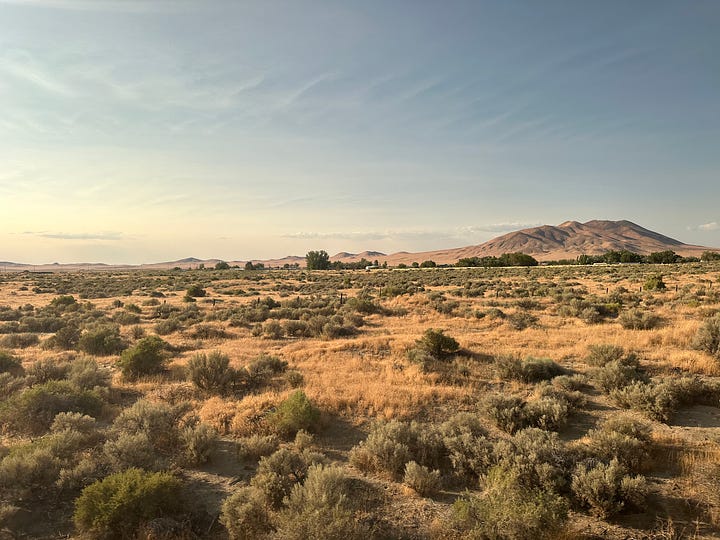
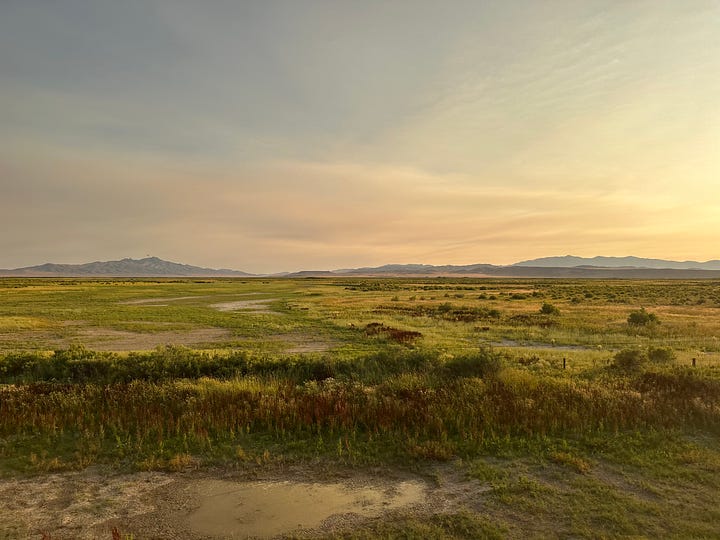
The landscape got rockier as we made our way east. We hit Salt Lake City just after midnight, then passed through Provo and the cowboy towns of Southern Utah. On both sides we were surrounded by rusty rock cliffs and muddy rivers; at one point, you could see Arches National Park in the distance—a jagged band of red lining the horizon. This was outlaw country now, the conductor told us. The man had come up into the observation car to give us a morning tour, and he had a special talent for mapping every nondescript landmark to a movie I’d never seen: Cars was based off Thompson Springs (pop. 45), as was a memorable cafe scene in Thelma and Louise; particular cinegenic rocks had starred in City Slickers, The Lone Ranger, and Vanishing Point. In Cisco, Utah (ghost town, pop. 2), Johnny Cash once filled his gas tank and wrote a song about it. I missed the cultural cues, but oohed and ahhed nonetheless.
It took crossing into Colorado for the sky to turn a proper picture-book blue. Our train cruised between canyons and mountains, tracking the Colorado River, which was surprisingly calm. Amid the water, we got glimpses of fluorescent orange lifevests and the banana-boat yellow of rafts, plus the occasional lobster pink of a sunburned ass cheek when the train got mooned (as the ritual goes). By the time we left Glenwood Springs and got close to Denver, the landscape was green again.
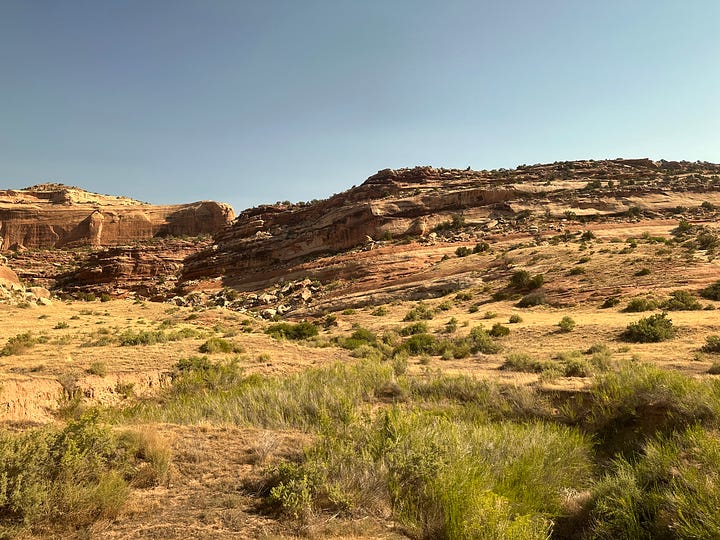
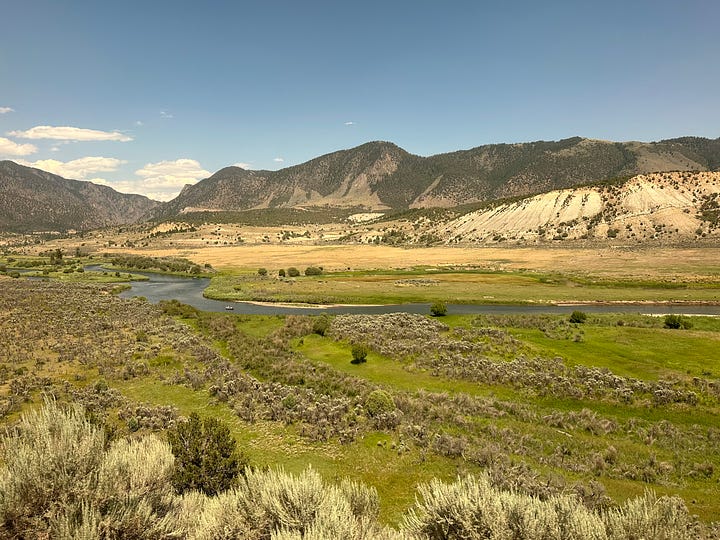
It was easy to pass away hours gazing idly out the window: at little piles of lumber lying next to the tracks, low-lying shrubs polka-dotting the hills, rusty bridges and glassy streams and faded JESUS LOVES YOU signs on the sides of barns. Fields of cows, horses, and baby goats. I wondered what it’d be like to live in small-town America. To wade in a stream, to drive fast on an empty road, to look up at the sky and see real stars. I felt sunny and nostalgic.
The Sightseer Lounge was just as good for people-watching as for the outside views. From Emeryville until Reno, the car was utterly dominated by a group of six white women occupying two tables on the far end. They looked to be in their 30s or 40s, two wore matching GIRLS TRIP tanks, and they were playing the rowdiest game of UNO I’d ever heard. I tried to eavesdrop, but the women were laser-focused on the game itself. It’s your favorite color yellow! Green! Draw four! Reverse! I felt annoyed at them for disrupting my writing, then annoyed at myself for feeling annoyed at their fun. When one woman finally won, they all stood and shrieked. Fine—I decided I wanted whatever they’re on.
No matter how loud it got, I avoided putting my AirPods in. Noise-canceling headphones felt sacrilegious—an antisocial shirking of the esprit du Amtrak, where we were constantly being reminded to share space with strangers. (“Four to a table,” Conductor Cody chided. “It’s Sunday, isn’t it? So let’s commune.”) And these women were far from the only group to pick a fight over a card game. A Cantonese family of three, skinny preteens in baseball caps. During the day-and-a-half of travel, I saw countless card game feuds.
My assigned seat was located across the aisle from a pleasant Amish couple, who came exceptionally prepared with a pillow, plastic cooler, and cozy knit blanket. The woman wore an ankle-length mauve-colored dress, and her husband a matching shirt under his worn wool vest. On day two, they woke up early to swap their mauve set for a royal purple one, then headed to the observation car for morning Bible study. They were very dignified, I thought, because I was still wearing the same t-shirt and pants from the day before.
Lovebirds flocked to the California Zephyr. My other neighbors included two alt-looking Europeans in their 20s (the guy rocked a calf tattoo, cut-off jorts, and a sandy-toned beanie that looked like it was falling off his head), plus plenty of older folks, who found it easy to commune at the shared tables. One animated conversation involved the rising price of property: “A two-bedroom ranch costs half a million in Colorado now. Who can even afford this?” asked the wife. “We need an open season on hedge fund managers,” joked her husband. Sometimes, it was hard to tell if a pair arrived together or met on the train. I recalled the meet-cute in Before Sunrise, and wondered if there was an inherent, fleeting romance to long-distance rail.
From 2014 to 2016 or so, the Amtrak hosted an official writers’ residency.1 It began as an offhand idea in an interview with
, which became a reality when Jessica Gross took her first comped trip on the Lakeshore Limited. The program involved awarding select writers with a single long-distance sleeper ticket, then waiting to see what they produced—no strings attached.It’s no surprise that writers flocked to apply. My best thinking gets done on planes: the lack of WiFi, the white noise, the focusing nature of having nothing else to do and nowhere else to go. Couldn’t an overnight train, with the same benefits (plus bigger windows and extra legroom) mimic and extend these conditions?
Writers, after all, are drawn to enclosure. Physical boundaries create social experiments, forced encounters, snow-globe microcosms of humanity’s virtues and ills. Before the train fellowship, there was the cruise essay, the literary microtrend kicked off by David Foster Wallace when he published “Shipping Out” in Harper’s in 1996. If Wallace’s account of the luxurious m.v. Nadir critiques the insatiable WANT of the American consumer (capitalization his), the Amtrak’s cramped shared bathrooms and scant cafe offerings represent something more like conscious deprivation. If Lauren Oyler’s Goop cruise elicited revulsion at the self-absorbed class striving of herself and her fellow passengers, the Amtrak offers its passengers a semblance of social leveling. We are all equal citizens on these vinyl-cushioned seats.
Indeed, there are no dance floors, yoga classes, or celebrity cameos on the California Zephyr—you have to learn to entertain yourself. Never mind the instant gratification of TikTok, DoorDash, and fiber internet—the spotty data and slow-passing scenery was an exercise in uncovering new zones of attention. Adam Kirsch, in his piece about the Amtrak residency, theorized: “Perhaps there is a certain charm in the fact that the train is an obsolete mode of transportation, much as literature sometimes suspects that it is an obsolete form of communication.”
But are all railways artifacts of a bygone past, or just this one? How did we—America, that is—get to the point where train rides are nostalgia trips instead of efficient means of getting from point A to B? I found it strange to reflect on this dual symbolism. During my visit to China, high-speed rail was one of the most visible expressions of modernization, progress, and technology. In California, taking the Amtrak was a reprieve from it.2
So where was I going, and what was the point? A day and a half to Denver, only to head back again?
I turn 25 this Saturday. I’ve never feared aging—the “future” is rather immaterial to my short-term brain—but these days, I feel like I’m always being hounded by the urgency of the present. I am happy, but I could be happier. My life is rich, but it could be richer. My weeks have gotten increasingly regimented, each day a tightly packed grid of rainbow-colored calendar blocks. I want to have and do it all. If I don’t spend my days well, what will become of my life? Maybe Annie Dillard’s words are etched too close to my heart.
But busyness has a way of stealing creativity from you. Generative work, like art and writing, requires long periods of nothingness: it’s only in that wide empty space that ideas emerge. Long runs, hot showers, commutes that don’t involve harried Slack messages and listening to podcasts at 2x speed. Sitting at the edge of a dock, listening to the ocean breathe. Novels that make you daydream. Some people go on meditation retreats to clear their minds, but I wanted—needed—to reactivate mine. To put it in corporate terms: the train served as one 36-hour focus block.
It’s this decision—to take the scenic route—that ultimately united us ragtag travelers on the California Zephyr. As Caity Weaver wrote in her Amtrak essay for The New York Times Magazine: “The most unifying characteristic of my fellow passengers was not age (although, as a rule, the sleeping cars skewed retired), race (very mixed), income (while sleepers are astronomically priced, coach seats can be downright economical for shorter segments) or even fear of flying (no one I spoke to had it); it was their relaxed, easygoing, train-lulled contentment. To opt to travel long distance via Amtrak — a method deemed “on time” just 71.2 percent of the time by its own generous metric — is to say: As long as I get there eventually, I’m satisfied.”
My friends and I arrived at Denver’s Union Station on Sunday at 6:19pm, eight minutes ahead of schedule. The temperature was 92 degrees. We spent the next 24 hours exploring the downtown food, drink, and air-conditioned cafe scene, finishing our drafts and downing several iced coffees before catching a 10:25pm flight back to San Francisco. I reached my front door at 1:15am, then set an alarm for 8. In the morning, there would be more work to be done.
🌱 little life updates
I’m collecting favorite paragraphs/poems/text excerpts for my 25th birthday: what words would you take with you into a quarter-life crisis? I’d love if you could share yours here—I’ll email the collection out to folks afterwards!
If you’re a Substack writer, you can now write a post and check your stats from the mobile app.
The cruise essays mentioned—DFW’s and Lauren Oyler’s—are as good as they are reputed to be. And as much as I enjoyed the Amtrak’s asceticism, I’m very tempted to pick an off-season cruise for our next writing retreat.
Other things I enjoyed reading over the past couple months:
- ’s ode to Charli XCX (true pop criticism, not brat summer meta-commentary)
- ’s short story “The Husband Stitch” (green ribbon girlies, this is for you)
- ’s “Why Republican Party Leaders Matter More Than Democratic Ones” (on interest group advocacy)
Peter Hessler’s Other Rivers and “Sideline Sinology” (still in my China guy era, evidently)
Wolf Tivy’s Moses-esque manifesto for action over aesthetics
I get all my 2024 election news and memes from the
Substack chat
Thanks for reading, and please do send me your unconventional writing retreat ideas!
Warmly,
Jasmine
Credit to
for telling me about this in 2022! Also, I tried to find out whether Amtrak still ran this official program, but all I saw was a “social media residency” in its place. I think this says something sad about the status of literature in America today.To be clear, my slow-travel romanticism does not supplant a real desire for functional high-speed rail in the United States, especially up and down the coasts. (I considered trying to squeeze that spiel into this essay, but it didn’t really work.)




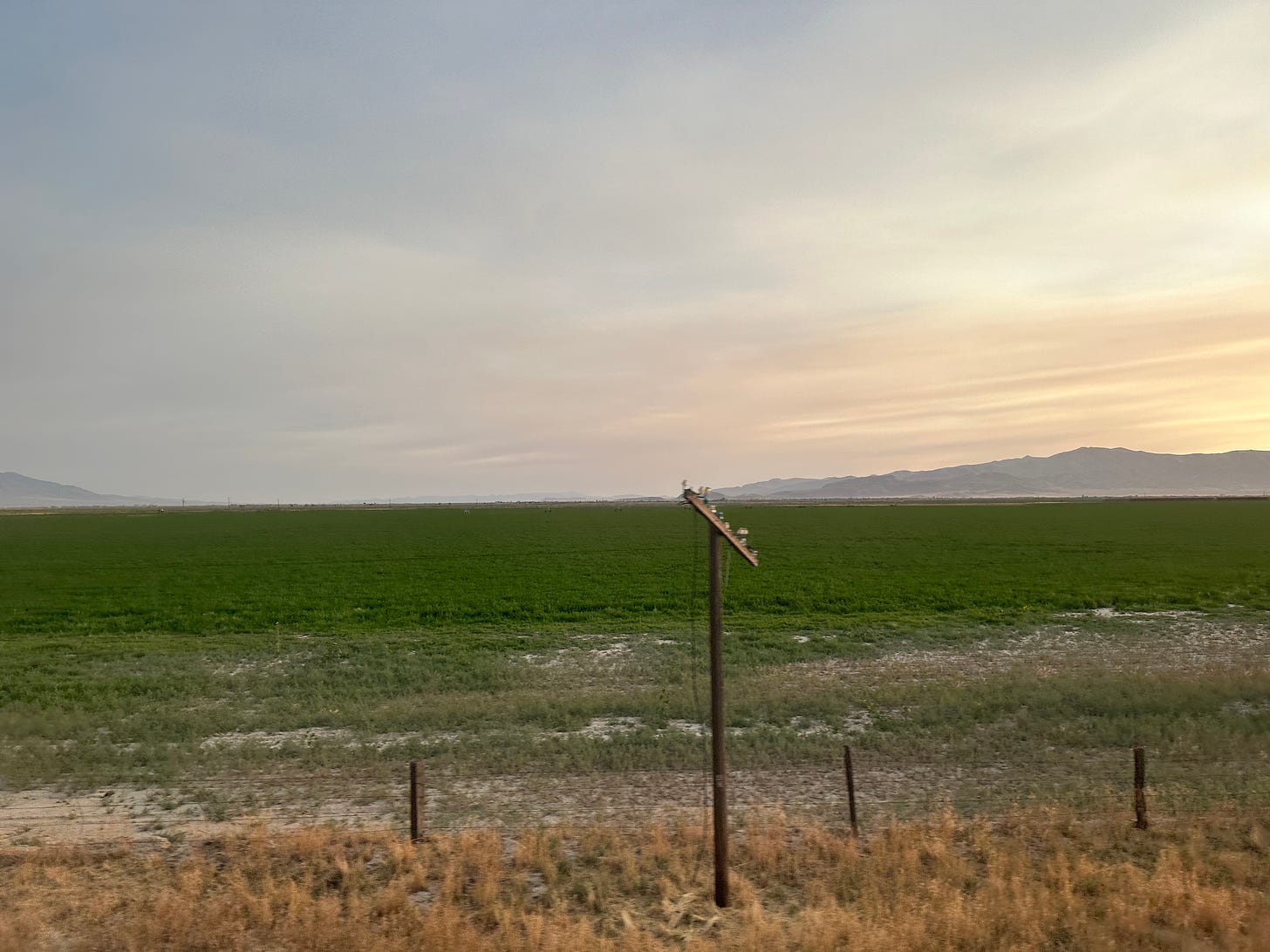
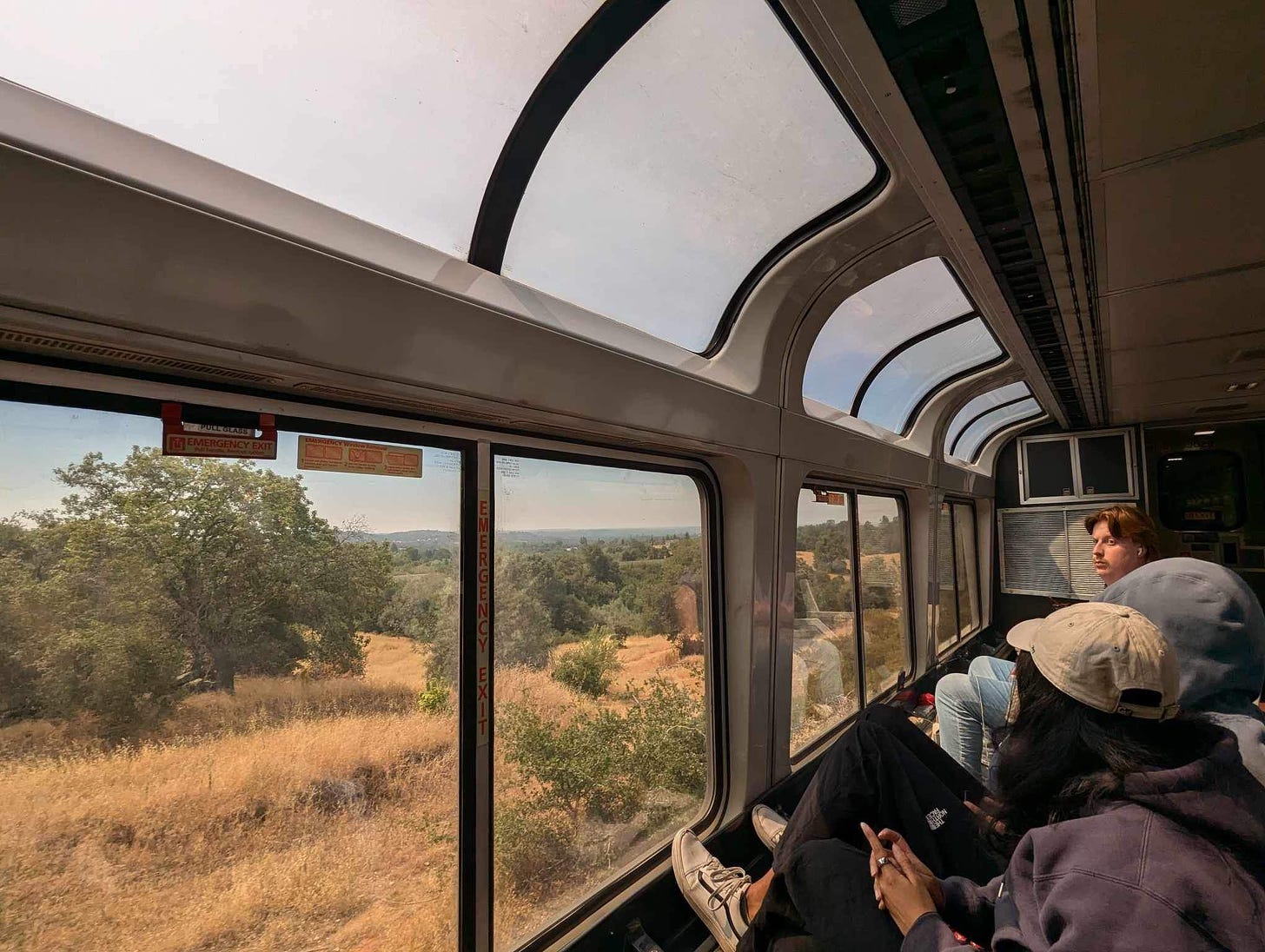
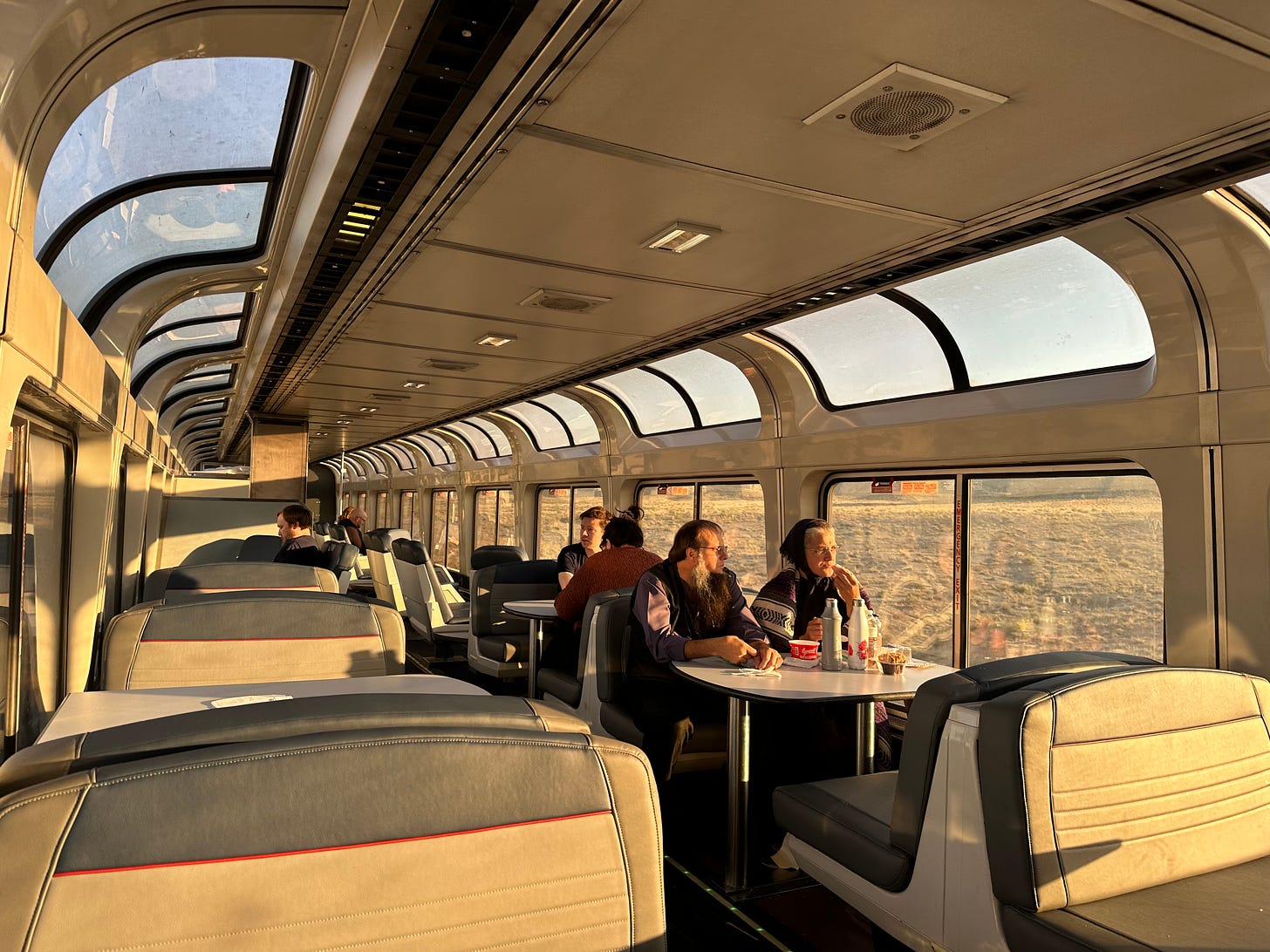
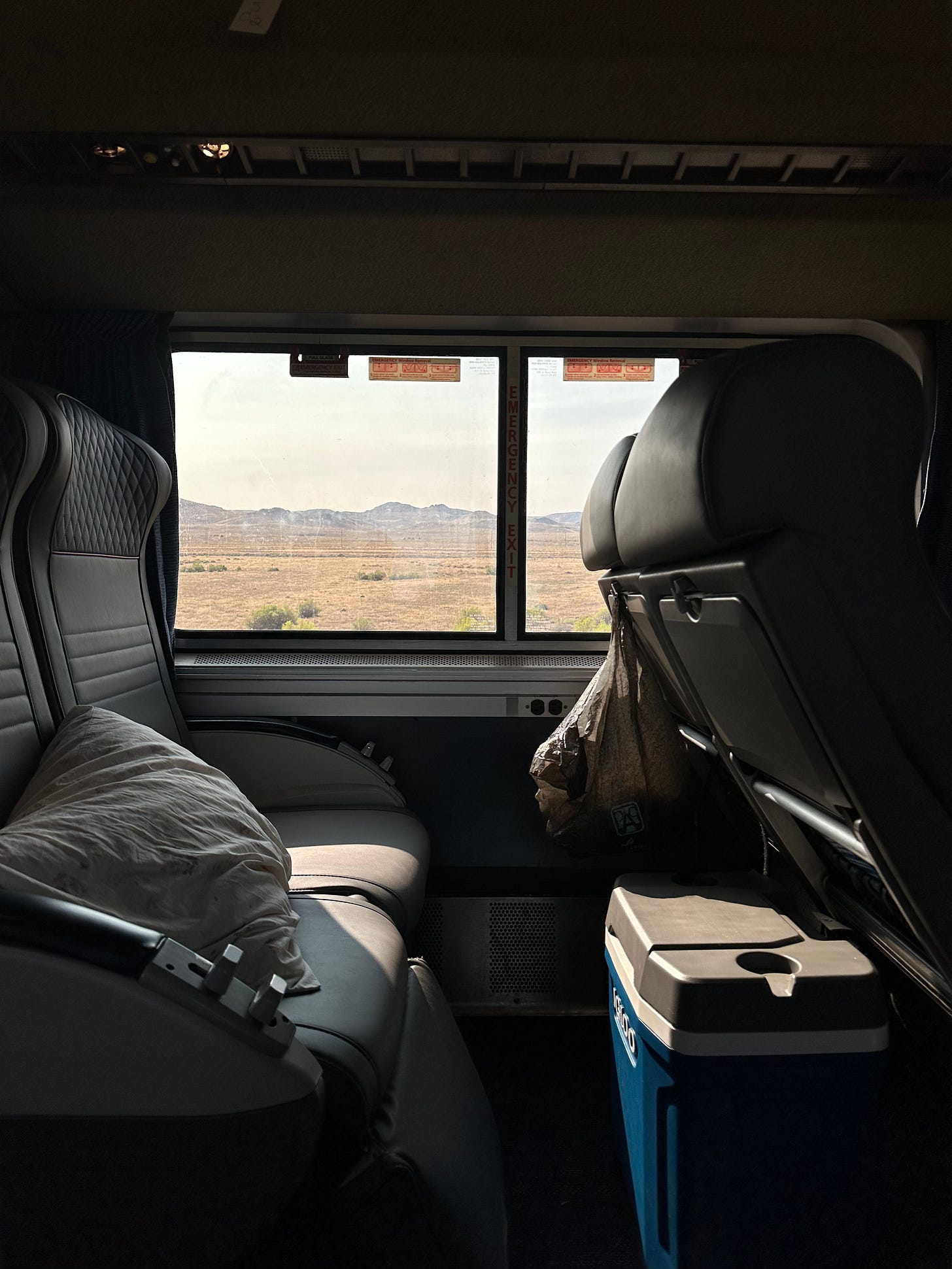
On my Amtrak residency trip, I met a Japanese man, a recent retiree, who sat in the observation car and smiled the whole way across country from Chicago to Portland. It had been his dream to come and do this. It's pretty great.
Opening this post in an app-switching fit of anxiety, racing to catch a flight on the Deutsche Bahn at 200mph was ironic. Slowed things down to an American daydream so… success! Sounds like an amazing trip